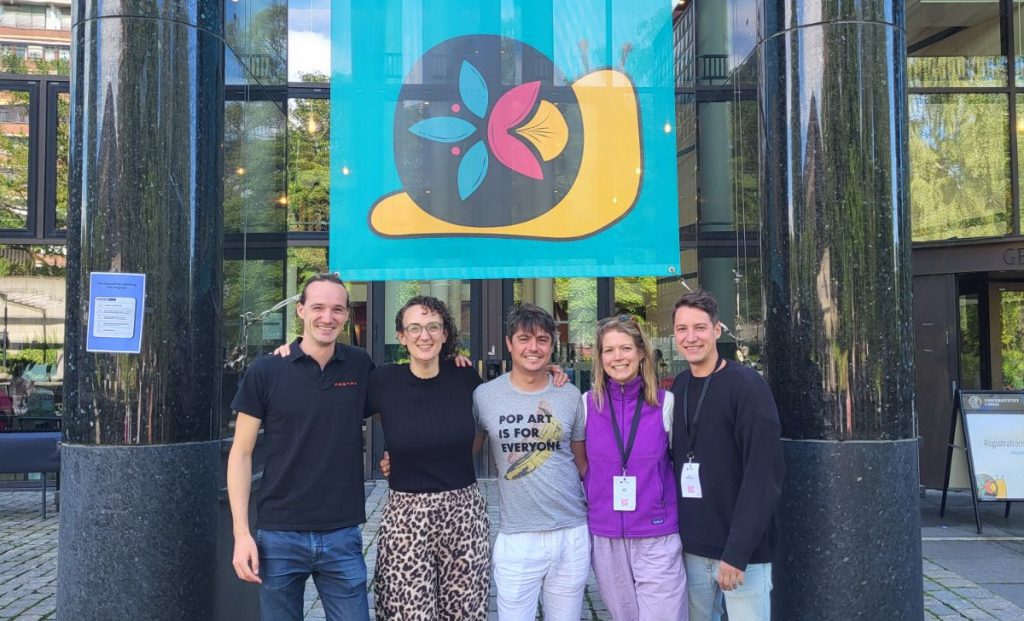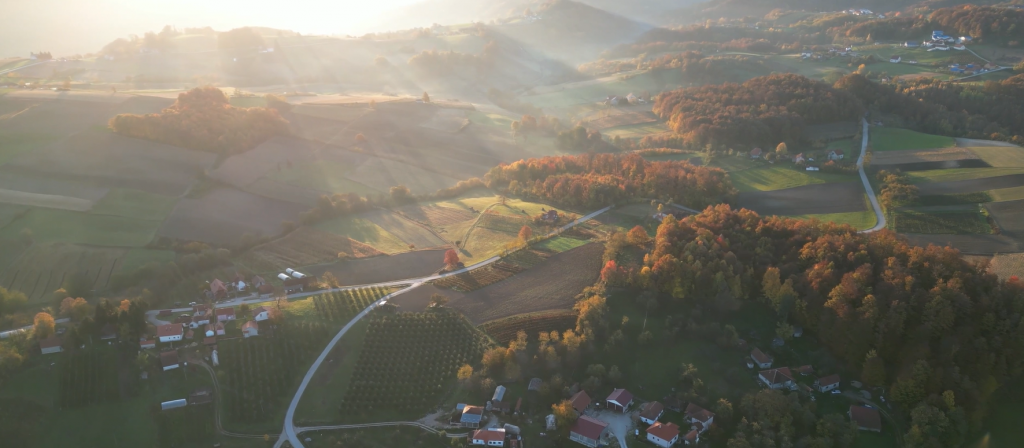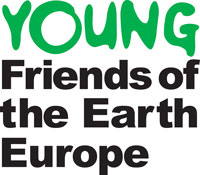Brussels, 16 July – Europeans can live long and be happy without the need for soaring carbon dioxide emissions, shows the European Happy Planet Index launched today by nef (the new economics foundation) and Friends of the Earth Europe. The Nordic countries demonstrate that low carbon living is compatible with high levels of well-being, but Europe is overall less efficient today at delivering well being for its carbon dioxide emissions than 40 years ago.
The European Happy Planet Index ranks 30 European countries for their carbon footprint, life expectancy and life satisfaction, which are then combined to rank the countries for the efficiency with which their resource use translates into relatively long and happy lives:
- Iceland, Sweden and Norway top the Index, because they achieve the highest levels of well-being in Europe at a comparably low environmental cost
- Major European nations trail behind: Spain is 12th, Italy 14th, Germany 15th, France 18th and the UK 21st in the league of 30 countries
- New EU Member States and Portugal, Greece, and Luxembourg rank the worst, because they have the biggest carbon footprints with relatively poor life expectancy and life satisfaction
- Europe as a whole has become less efficient, not more, in translating fossil fuel use into relatively long and happy lives.In fact, the Index reveals that Europe is less carbon efficient now than it was in 1961.
- Across Europe people report comparable levels of well-being whether their lifestyles are resource-efficient or resource-hungry. The message to politicians is that people are just as likely to lead satisfied lives whether their levels of consumption are very low or high and therefore they should not be afraid of policies to reduce demand.
“Countries like Iceland, the highest scoring nation on our Index clearly show that happiness doesn’t have to cost the earth. Iceland’s combination of strong social policies and extensive use of renewable energy demonstrate that living within our environmental means doesn’t mean sacrificing human well-being – in fact, it could even make us happier. By learning from the differences between European countries and by copying the best practices, we believe it will be possible to both greatly reduce our carbon footprint, and increase our well being,” says Nic Marks, founder of nef’s Centre for well-being
“The European Happy Planet Index report shows that people in countries that pump out carbon dioxide emissions aren’t even any happier than those that control their carbon footprints. Europe’s economic development can be climate friendly without impacting on our well being – and all European governments can make this happen, by committing to year on year reductions in carbon dioxide emissions,” said Fouad Hamdan, Director of Friends of the Earth Europe.
The Index reveals that with regard to life expectancy and life satisfaction (happy life years):
- North European countries like Denmark, Switzerland, Iceland, Finland and Sweden do best in terms of life satisfaction.
- The UK comes a disappointing 15th in both league tables for life satisfaction and life expectancy. Contrasted with nations such as France and Germany this puts the UK just ahead in terms of life satisfaction, with Germany 16th and France 19th; but behind on life expectancy with France in 7th place and Germany just ahead in 14th.
- New EU member state economies such as Bulgaria, Lithuania, Latvia, and Romania do worst in both tables, differing only slightly in rank order.
Where the carbon footprint is concerned, a more interesting and less obvious picture begins to emerge:
- Luxembourg is by far the worst country for its carbon footprint per person (so bad in fact that we couldn’t fit it on our scale), but also from a league of 30 nations the UK comes in fourth from the bottom. Finland and Estonia join the UK and Luxembourg at the bottom of the table as the other countries with worse consumption per head of population.
- The Scandinavian nations have some of the lowest per capita carbon footprints in Europe, despite also being amongst the richest and happiest nations. Some of the differences can be explained by access to domestically available renewable energy sources, but not all. Even wealthy, high consuming Switzerland has only the ninth largest footprint.
- Europe as whole is responsible for almost three times its fair, global share of carbon emissions.
“Countries that have most closely followed the Anglo-Saxon, strongly market-led economic model show up as the least efficient. These findings question what the economy is there for. What is the point if we burn vast quantities of fossil fuels to make, buy and consume ever more stuff, without noticeably benefiting our well-being? We know that someone is just as likely to have high life satisfaction while living within their environmental means, as someone who recklessly over-consumes. So, what is preventing us from radically changing direction, and reaping the benefits? If Europe doesn’t lead, India, China and Brazil will not follow,” says Andrew Simms, nef’s policy director and head of the climate change programme.
On current performance, Europe is not remotely close to navigating an economic course set to reach its desired location on climate policy. It needs to achieve a carbon footprint small enough to help prevent the planet warming by more than 2 degrees above pre-industrial levels.
This requires cuts in emissions by industrialised nations of between 70 and 80 per cent by 2050 compared to 1990 levels according to Sir Nicholas Stern, author of the Treasury’s influential report on the economics of climate change.
Worse still, as the European Happy Planet Index reveals, Europe is heading in the wrong direction, its carbon footprint still growing, and its level of carbon efficiency in terms of fuelling happy, long lives is lower than at any level in the last 40 years.
To reverse this trend, we need to look to the example of those European countries that are already the most efficient – some of the most socially progressive and technologically advanced nations anywhere in the world.
Innovative policies will need to be developed that significantly reduce per capita carbon footprints whilst enhancing well-being. This will require comprehensive action, but the key targets for policy makers are:
- Reducing consumption overall and setting legally binding targets for carbon reduction: Every European Government needs to set legally binding targets to steadily reduce their greenhouse gas emissions year on year, through the introduction of short-term carbon budgets. The exact carbon budgets for these countries must be on a trajectory sufficient to meet their share of the overall EU target to stay below 2 degrees Celsius.
- Reducing inequalities: Inequalities – not just of income, but also of education, health and social opportunity – have a damaging impact on well-being. Governments should aim to halt and reverse rises in inequality, and provide more support for local communities to thrive.
- Support meaningful lives: It is time that European governments invested in and implemented national well-being accounts to inform policy making across government, ensuring that the impact of policy decisions on people’s well-being is taken into account.
nef and Friends of the Earth Europe call on European governments, and the European Commission to adopt this analysis and embrace and apply new measures of progress, like the HPI. Only then will we be equipped to address the twin challenges of delivering a good quality of life for all whilst remaining within life-supporting environmental limits.
The impacts of global warming, both within the EU and around the world, means that we can no longer justify the marginal benefits reaped from our current high and inefficient levels of resource consumption. The price paid by future generations and people alive today in poorer countries, who have far fewer resources with which to adapt, is simply too great.
Europe needs urgently to find a new development path where good lives don’t cost the earth.
***
NOTES:
1.The full report is available at:
http://www.neweconomics.org and www.happyplanetindex.org
Graphs and tables included in the report:
Page 20-2:European Happy Planet Index map
Page 15:Carbon footprints in Europe
Page 22:Trends in Happy life years, footprint and resource efficiency in Europe, 1961-present
Page 18-19:Winners and losers
Page 23:Close up on the UK
The European Happy Planet Index:

FURTHER INFORMATION:
Close-up on the UK
Compared to data from the early 1960s, modest improvements in mean life expectancy in the UK have actually been accompanied by a slight decline in average life satisfaction of around six per cent. Per capita footprint, meanwhile, has increased by well over 50 per cent. The result has been to push the UK to the point where conservatively, it would take over three planets like earth to support the whole world at the UK’s level of consumption per person. As a consequence, the pattern of change in consumption efficiency at delivering well-being is unimpressive. Following a sharp decline throughout the 1960s and early 1970s, efficiency has stagnated.
What does this mean in practice? Average UK citizens can now expect to live slightly longer than was the case in 1961, which implies that they can also expect better healthcare and may tend to eat a better diet. They will certainly have a more carbon-intensive lifestyle, with more consumer goods, more cars, more foreign holidays and more imported food. And yet, perhaps oddly given that they somehow manage to consume almost double the amount of planetary resources per person than in 1961, they will probably feel – if anything – less satisfied with their lives overall. Perhaps it is no wonder that in a recent survey conducted by the BBC asking in which decade since the 1950s people would most like to live, the winner (with almost one-third of the 31,000 votes cast) was the 1960s.
The European (un) Happy Planet Index: Winners and losers
European Happy Planet Index: top 3
Iceland:1; EuHPI 72.3
Leading the HPI table by some distance is Iceland. Its volcanism gives it a distinct advantage, providing an essentially free, easily harvested and sustainable energy source in the form of geothermal energy (located on the Mid-Atlantic ridge, Iceland has over 200 volcanoes and 600 hot springs). The energy security provided by geothermal energy has strongly influenced the standard of living in Iceland – one estimate suggests that using geothermal for space heating instead of fossil fuels saves Iceland about US$100 million in imported oil annually.
Practically all space heating (89 per cent) comes from district heating schemes fuelled by geothermal energy, and around 99.9 per cent of electricity comes from hydropower or geothermal power stations. The industry, transport and fishing sectors are the only significant emitters of carbon in Iceland. Politically and socially, Iceland fits the Scandinavian model. Its government commits the most resources to health in Europe, resulting in a society with high life expectancy. Iceland’s citizens also report high levels of trust and the lowest fear of crime in Europe. It is also interesting to note that, despite the cold, Icelanders watch very little television – 28 per cent less per day than the British, for example.
Sweden:2; EuHPI 63.3
Low carbon energy is also a high priority in Swedish government policy. Just 27 per cent of primary energy in Sweden comes from fossil fuels, resulting in a low per capita CO2 emissions and CO2 intensity factor. (Compare this to the UK, where a massive 89 per cent of primary energy is derived from oil, gas or coal.) Renewable energy contributes to around 26 per cent of Sweden’s primary energy (well above the EU-27 average of 12 per cent), the majority of which comes from hydropower. Most Swedes also enjoy high standards of living, with the third-highest life expectancy in Europe and the second-lowest levels of income inequality. Sweden boasts the highest rates of political engagement in Europe, with 45 per cent of the population claiming to have participated in some form of political activity (in addition to voting).
Norway:3; EuHPI 56.0
As one of the top three producers of natural gas in Europe, Norway’s rejection of fossil fuels for domestic energy is notable (90 per cent of the 85 bn m3 produced every year is exported to other countries). Norway has invested in large-scale hydropower projects which produce 99 per cent of its electricity. Norway tops the Human Development Index worldwide indicating that material living standards are excellent. Reported levels of social capital are high, particularly trust and feelings of safety for both of which Norway ranks second in Europe.
European Happy Planet Index: bottom 3
Bulgaria:28; EuHPI 29.7
Bulgarians report the lowest levels of life satisfaction in Europe. Whilst Bulgaria has a marginally higher GDP per capita than Romania, household expenditure is also the lowest in the EU, suggesting that Bulgarians actually have less disposable income than Romanians. Low material standards of living also coincide with low scores on measures of good governance and low levels of government spending on health and education (as a percentage of total spending). Bulgaria has a relatively diverse energy mix, but one-third of this is derived from solid fuel, resulting in an above-average carbon intensity.
Luxembourg:29;EuHPI 29.6
Luxembourg performs poorly for very different reasons. One of the wealthiest countries in the world, levels of life satisfaction are high – though by no means the highest in Europe – but so is per capita carbon footprint (6.9 gha per person). Domestic energy production is 100 per cent renewable, but this accounts for just two per cent of the total primary energy, the rest being imported from carbon intensive sources. Much the largest contributor to Luxembourg’s excessive footprint, however, is its enormous transport sector which is responsible for around 60 per cent of total energy consumption – double the European average.
Estonia:30; EuHPI 29.3
Bottom of the HPI table is Estonia. Whilst Estonia, one of the ‘Baltic tigers’, posted the second-highest GDP growth rate in Europe in 2006 and has been praised as one of the ten most liberal economies in the world, it has not enjoyed comparable gains in well-being. Perhaps well-being increases have been mitigated by declining social cohesion – Estonia has high income inequality, coupled with particularly low levels of political engagement and high fear of crime (the second highest in Europe). Worse than other Eastern European countries, Estonia combines these low levels of well-being with an extremely heavy carbon footprint. This is partly due to its use of oil shale, a low-grade solid fuel, for 56 per cent of primary energy – far above the EU-27 average of 18 per cent.







